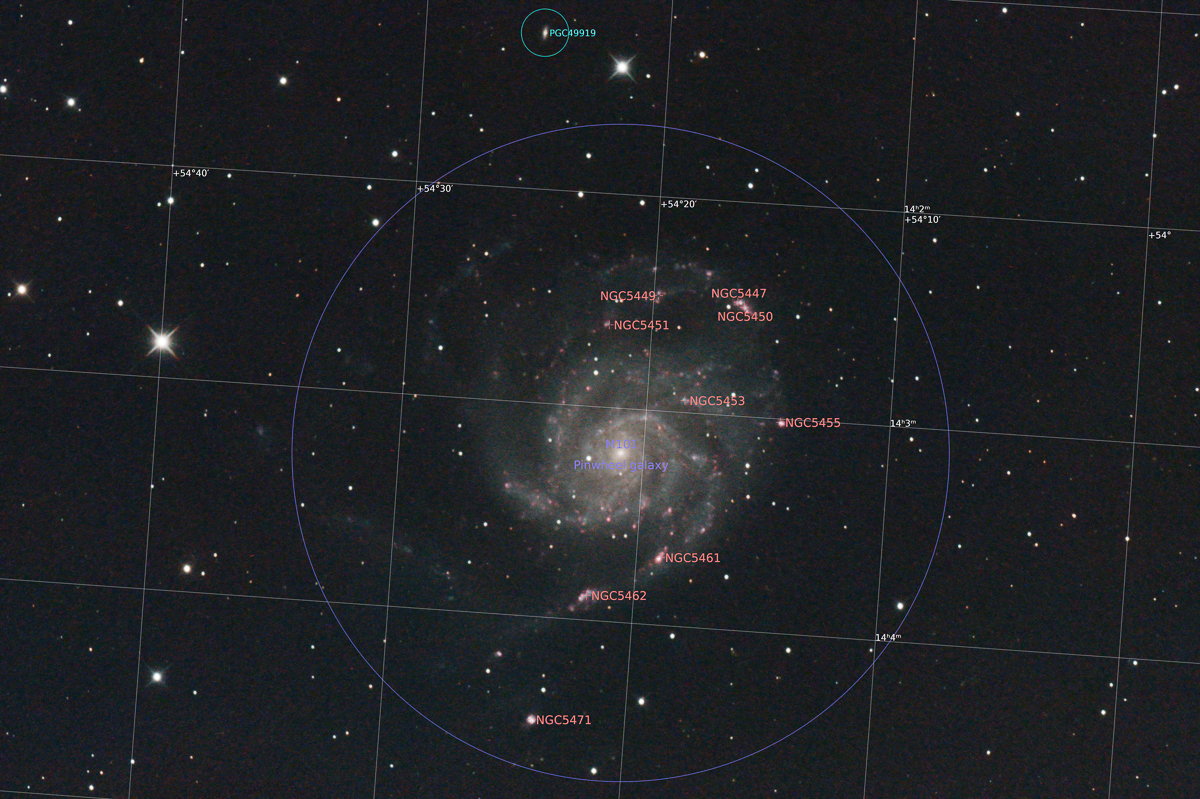Vinter 2023
Januari - april 2023
I slutet av 2022 köpte jag ännu ett teleskop med lång brännvidd, så det blev mycket djuprymdsfoton under början av 2023. Sedan hade vi ju också flera roliga besök av våra numera fem barnbarn.
M101 Pinwheel galaxy

The Pinwheel Galaxy (also known as Messier 101, M101 or NGC 5457) is a face-on spiral galaxy 21 million light-years (6.4 megaparsecs) away from Earth in the constellation Ursa Major.
M101 is a large galaxy, with a diameter of 170,000 light-years. By comparison, the Milky Way has a diameter of 100,000 light-years. It has around a trillion stars, twice the number in the Milky Way. It has a disk mass on the order of 100 billion solar masses, along with a small central bulge of about 3 billion solar masses. Its characteristics can be compared to those of Andromeda Galaxy.
M101 has a high population of H II regions, many of which are very large and bright. H II regions usually accompany the enormous clouds of high density molecular hydrogen gas contracting under their own gravitational force where stars form. H II regions are ionized by large numbers of extremely bright and hot young stars; those in M101 are capable of creating hot superbubbles. In a 1990 study, 1264 H II regions were cataloged in the galaxy. Three are prominent enough to receive New General Catalogue numbers—NGC 5461, NGC 5462, and NGC 5471.[16]
M101 is asymmetrical due to the tidal forces from interactions with its companion galaxies. These gravitational interactions compress interstellar hydrogen gas, which then triggers strong star formation activity in M101's spiral arms that can be detected in ultraviolet images.
46*3min med IDAS LPS D2-filter i Stuvsta under blåsiga förhållanden.